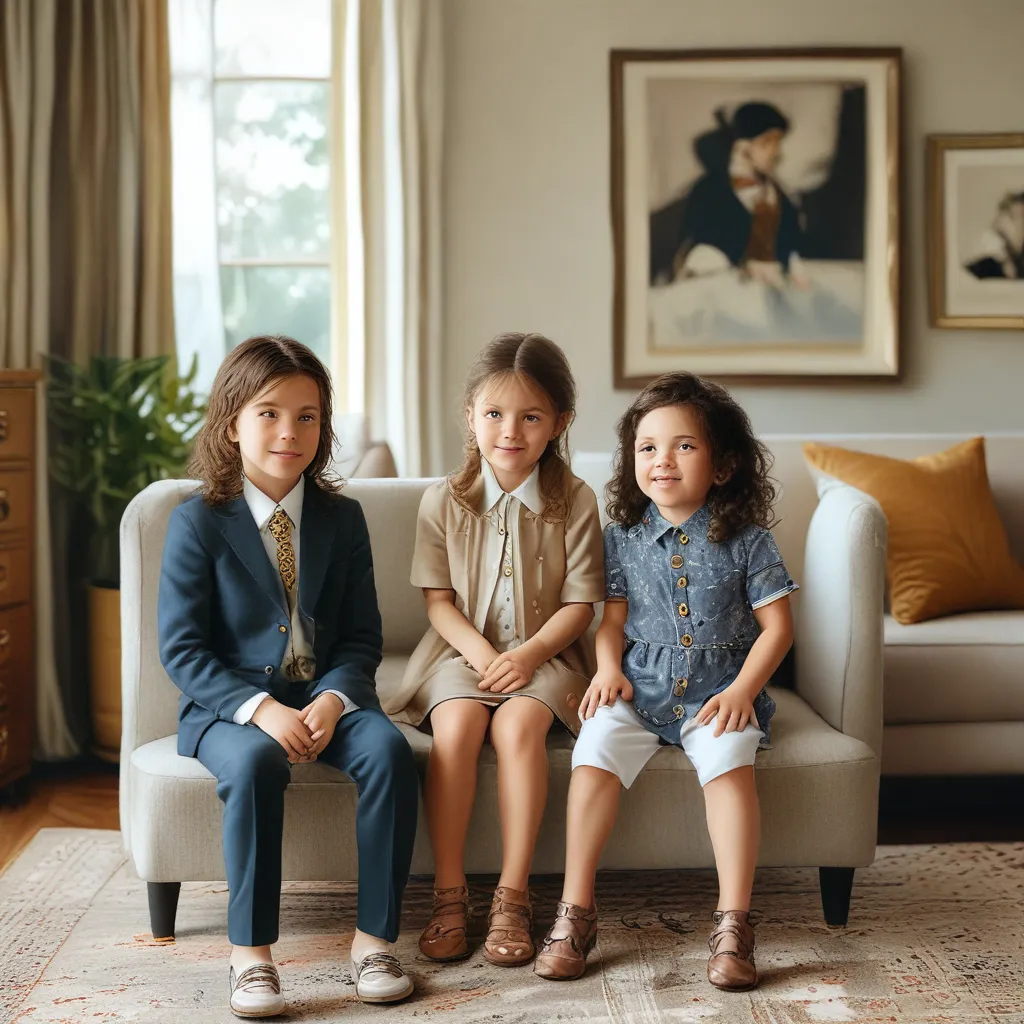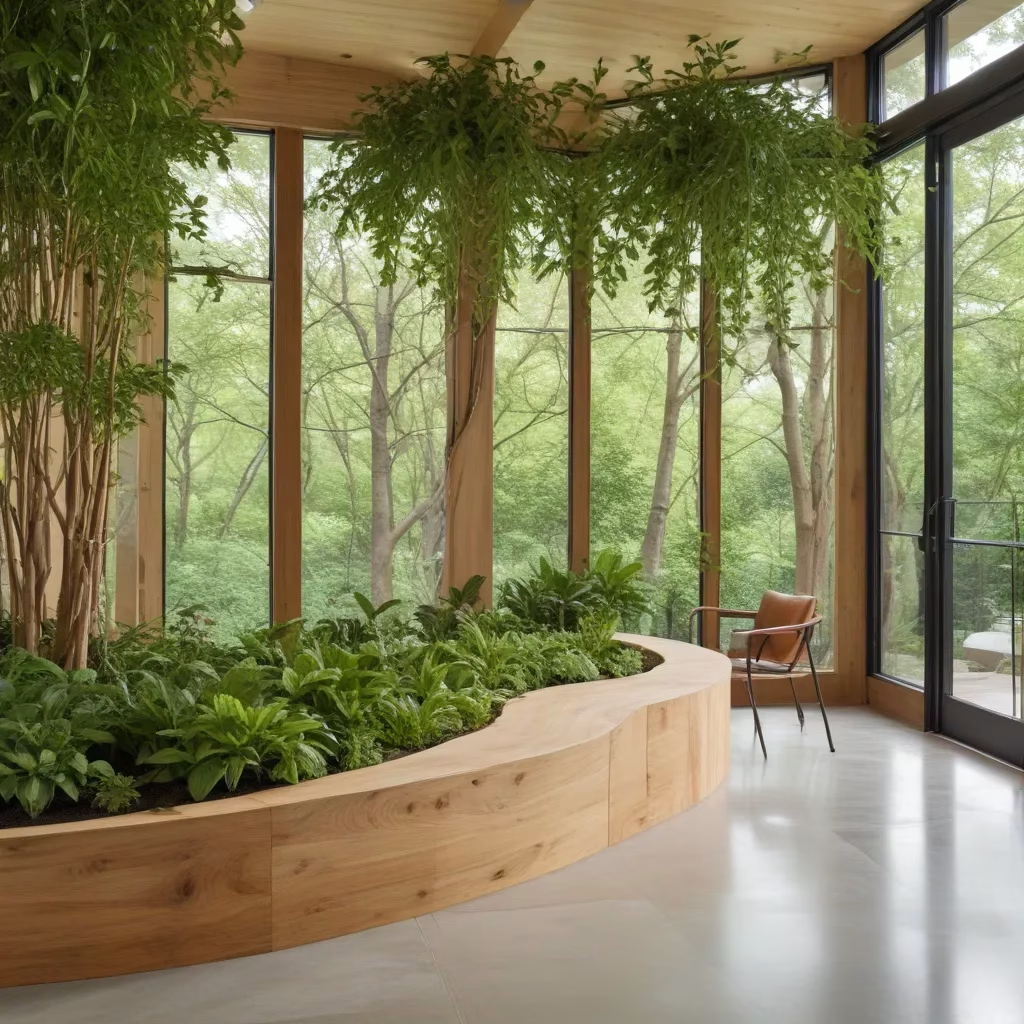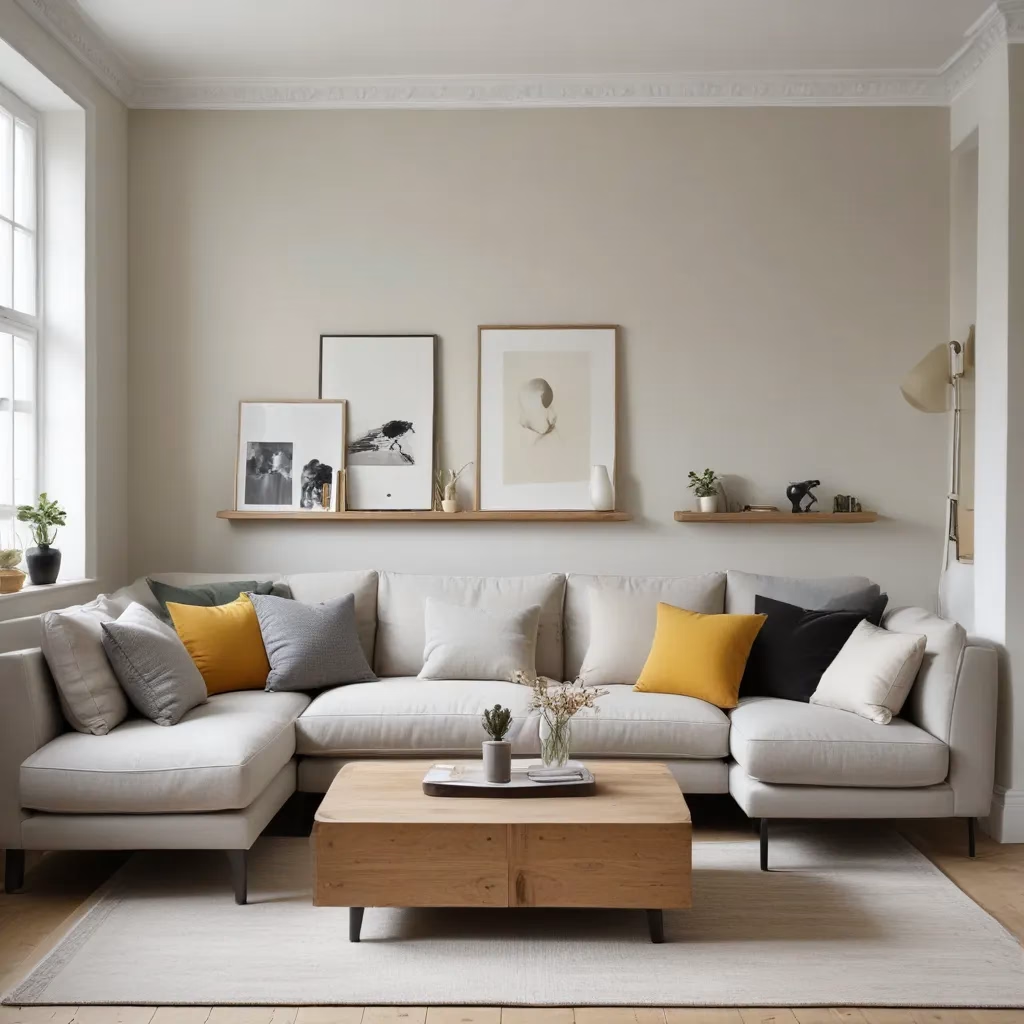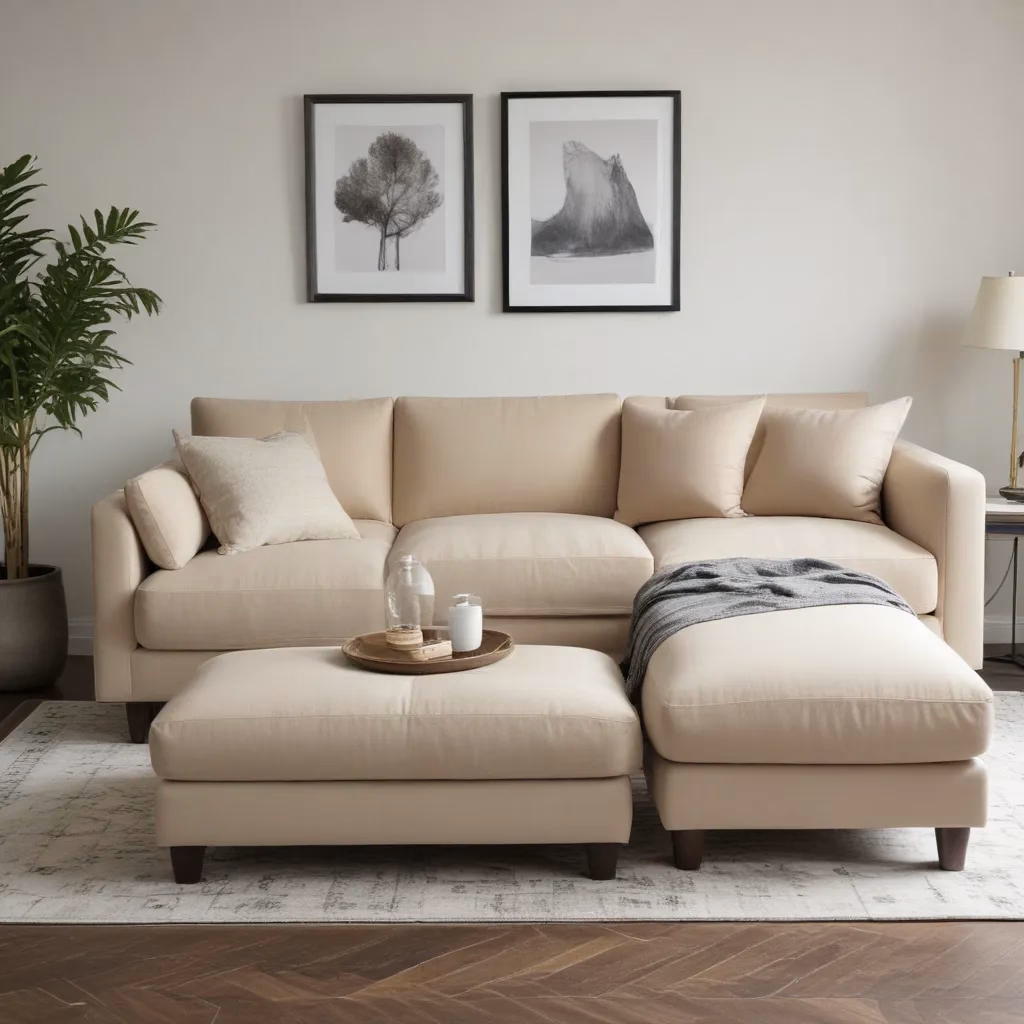Embracing the Yin and Yang of Parenting and Design
As a parent, I know the eternal dance between keeping our living spaces looking sharp and ensuring they can withstand the boundless energy and unpredictable messes of little ones. It’s a delicate balance, but with the right approach, you can absolutely curate a kid-friendly yet sophisticated look in your home.
Let’s begin our journey by taking a page from the playbook of Kai Avent-deLeon, the owner of the Brooklyn-based boutique Sincerely Tommy. Kai doesn’t have anything in her home that she’s “super concerned” about with her four-year-old son Che running around. Instead, she approaches her home decor with comfort and practicality in mind, choosing pieces like napping couches that are “easy to throw yourself on and feel comfortable and relaxed.”
Kai’s aesthetic is a masterful blend of “modern surrealist with a bit of Shaker,” and she keeps her color palette pretty neutral to create a cohesive and calming story throughout her spaces in Brooklyn and upstate New York. When it comes to navigating kid-friendly design, Kai’s advice is simple: “You have to teach them how to move around the furniture.” Rather than barricading her son from the decor, Kai invites Che to make use of their shared space freely, even collaborating with him on creative projects like ceramic candle holders.
Finding the Balance Between Function and Flair
The key to curating a sophisticated, kid-friendly look lies in striking the right balance between form and function. Take Gabriela Noelle Gonzalez, a mother of twin toddlers in Miami, for example. Gabriela’s design approach is a delightful departure from the expected earthy tones, leaning instead into a vibrant, whimsical palette. “After graduating from Parsons School of Design, Gabriela began designing pieces with her mother, an interior designer,” the Architectural Digest article shares. “What emerged from this mother-daughter collaboration was a solo departure from creating pieces for quantity towards a focus on designing them with intention.”
Gabriela’s creations, which include a ping-pong table that doubles as a dining table, a swing, a seesaw, and a mushroom-shaped stool, are built with high-quality, durable materials like acrylic and Tibetan lamb’s wool. These pieces not only inspire playful interaction but also seamlessly integrate into the stylish aesthetic of her Miami studio space. “Making pieces that transport the owner back to childhood is essential to Gabriela’s ethos as a designer, as well as an extension of her parenting style,” the article notes.
Prioritizing Comfort and Sustainability
Evelynn Escobar, the founder of the intersectional women’s outdoor club Hike Clerb, approaches motherhood and home decor with the same adventurous spirit. Evelynn describes her style as “youthful, expressive, colorful, and fun,” and she’s intentional about curating a space that evokes a sense of warmth and whimsy for her one-year-old daughter, Isla.
Rather than making major changes to their Los Angeles home, Evelynn and her husband have simply integrated Isla’s “little knickknacks” into their pre-existing “fun, bright vibe.” The key, Evelynn shares, is buying pieces that support Isla’s developmental needs while staying true to their personal aesthetic. “We already had curated a fun, bright vibe for our space, and Isla’s little knickknacks fell right in line with that.”
Sustainability is also a driving force behind Evelynn’s design choices. “Absolutely everything changed from the moment I knew I was carrying Isla,” she reflects. “And Isla, who she affectionately refers to as a ‘GeminIcon,’ enhanced Evelynn’s journey as a new mother, but also her design choices.”
Embracing the Beauty in Flexibility
Another parent who has mastered the art of blending kid-friendly practicality with sophisticated style is Ashley Lennon, the founder of the lifestyle brand Museum of Peace and Quiet. Ashley and her husband, Christion, gravitate towards vintage midcentury pieces and rare, well-designed objects, but they’ve had to adapt their approach since welcoming their son, Sunny.
“When I was pregnant, I said I’m not going to baby-proof. I want Sunny to move around and adjust himself,” Ashley recalls. “But as he started to get mobile and I foresaw freak accidents happen, I had to be more open to change.” The Lennons opened up their floor plan, played with materials and textures, and replaced their coffee table with an ottoman – all in the name of creating a space that’s both visually appealing and functional for their growing family.
As Ashley so eloquently puts it, “Children need less than you think.” The key is being open to change and focusing on “form and functionality,” rather than strictly prioritizing aesthetics. By embracing a flexible, multi-purposeful approach to their home decor, the Lennons have created a sanctuary that seamlessly supports both their personal style and their son’s developmental needs.
Cultivating a Sanctuary of Comfort and Play
Elise Peterson, an artist living in downtown Los Angeles with her five-year-old son, Sargent, has a similar philosophy when it comes to curating a kid-friendly yet sophisticated space. Elise describes her interior design style as “midcentury, playful, warm, and really flexible,” with a strong emphasis on sustainability and intentionality.
In Elise’s home, there’s a distinct line between shared spaces and Sargent’s personal domain. “Theres a distinct line between the home and Sargents personal space and my space,” she explains. “I dont keep toys in shared spaces. If he brings toys in the living room, they have to be put back before he goes to bed. But Im lenient with him in his space. His walls are covered in art. As long as it is clean, it is his. He understands boundaries.”
At the same time, Elise invites Sargent to interact with the objects in their shared spaces, like the altar in their living room featuring seashells, crystals, a candle singing bowl, and more. “I often flashback to my grandmothers French provincialcumRegency decor replete with decorative embroidered hand towels, plastic-covered brocade sofas, and candy dishes,” Elise shares. “There was an entire room – the living room – full of decor that, as a child, I knew I was forbidden to touch. Such a cruel misnomer for a space I often thought.”
Elise’s approach to home decor with her son is the antithesis of that stifling environment. By embracing the fluidity and flow of decorating without compromising her personal style, Elise has created a sanctuary where Sargent can freely explore and engage with the objects that spark his imagination.
Curating a Cohesive Oasis of Comfort and Joy
As I reflect on the insights shared by these design-savvy parents, a few key themes emerge that can help us all curate a kid-friendly yet sophisticated look in our homes:
-
Prioritize Comfort and Functionality: Choose pieces that are durable, easy to clean, and designed with the needs of little ones in mind, without sacrificing your personal aesthetic.
-
Embrace Flexibility and Collaboration: Involve your children in the design process, whether it’s through co-creating decorative elements or simply allowing them to move freely and interact with the objects in your shared spaces.
-
Cultivate a Cohesive Narrative: Maintain a consistent color palette, mix of shapes and textures, and overarching style throughout your home to achieve a polished, curated look.
-
Infuse Personal Meaning: Incorporate pieces that hold sentimental value, whether it’s a family heirloom, a work of art created by your child, or a memento from a cherished trip.
-
Invest in Sustainable Solutions: Opt for high-quality, multi-purpose furnishings and decor that will stand the test of time, both in terms of durability and timeless appeal.
By embracing these principles, you can transform your living spaces into a cohesive oasis of comfort and joy – a sanctuary where your family can thrive, your personal style can shine, and your little ones can freely explore and engage with their surroundings.
So, let’s raise a (spill-proof) glass to the art of curating a kid-friendly yet sophisticated look. After all, as the team at Sofas Spectacular would agree, our homes should be a reflection of our unique selves, no matter the stage of life we’re in.




